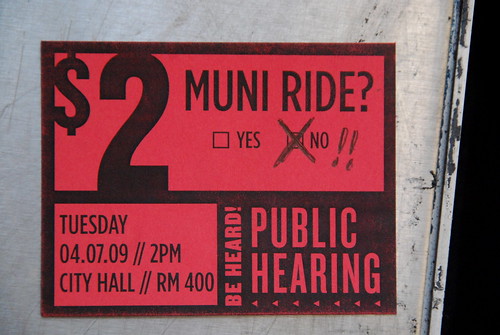Vancouver's about to launch its "
Laneway Housing" pilot project. The project aims to encourage owners of single-family homes in the middle of the city to build small in-law cottages on place of existing garages. Apparently garages in these parts of Vancouver front on back alleys, or lanes, hence the name.
The idea isn't without controversy, but the goal is to expand the diversity of housing stock in the city by building small, more affordable units. This would also densify the neighborhoods, meaning more people could live closer to work, grocery stores, etc.
A couple problems with the Canadian plan stuck out to me, including the ability for property owners to keep up to three parking spaces. That would allow the new residents to clog local streets with more cars, rather than increasing the walkability of the neighborhoods.
But the basic idea is good, and worth emulating in the almost-walkable, relatively high-density suburban areas of the Bay Area, including the City and County's own suburbs among the dunes on the West side of town.

Take this random stretch of Judah St. I literally double-clicked at random on MapJack to find this scene. The N-Judah runs in front of these houses night and day, but they all have garages! A decision by the city to allow in-law units in place of those garages would double the density of units in this picture. And all without casting any new shadows or otherwise disrupting the architectural character of the neighborhood.
A zoning change or a streamlined process for building and approving these in-law units would provide financial benefit for those homeowners on this robust segment of rail infrastructure who don't drive much, or might be willing to give up a parking space for some extra rental income.
Our city leaders tell us every chance they get that we need to find a way to fit more housing into SF. Their solution for the last three decades has been to put that in the "Eastern Neighborhoods." These neighborhoods - SoMa, the Mission, Potrero Hill and also Bayview - are being made to bear this load because there are pockets of industrial land that are going out of use for various reasons, but also because it's politically possible to do so; residents of those neighborhoods don't have ebough of voice in city government to stop it.
For reasons worth exploring (but not now) the homeowners West of Twin Peaks have made a political third rail out of any new, dense housing on their avenues. But that's not good for the city. It will cost a lot of money, out of public and private coffers, to put 10,000 units of housing on the East side of town.
Most of the new housing will be on the formerly industrial land, which often lacks sidewalks, adequate street lighting, traffic signals, sewers, even properly paved roads. And once those units are built the residents will have to squeeze onto those bus lines that survived the
TEP axe.

On the West side of town, however, four of Muni Metro's light rail lines already run through some of the lowest-density residential areas of SF. Almost every unit within a couple blocks of the K-Ingleside, L-Taraval, M-Oceanview and N-Judah has a garage. If it were easier (or even possible) to convert those garages into small apartments, this area of town could absorb 10,000 or so of them over the next 20 years with much less pain. And these new units would be truly Transit-oriented development.
Outside of SF, East Bay and Peninsula counties could use rezoning strategies like this to densify corridors along new light rail or BRT lines. Using tax revenue capture programs, they might even choose to fund the capital costs of those lines by encouraging this "laneway housing."
Every city and region has their own needs, but a properly-tailored plan for this kind of infill housing can steer development away from the exurbs and into existing neighborhoods, without many of the external costs that come when big development corporations raze and rebuild sections of the neighborhood fabric.
 If you've never checked out the link list in the sidebar of this blog, please stop what you're doing and visit SF Cityscape. In addition to some cool photos, they have some remarkable and beautifully drawn fantasy maps of Bay Area transit.
If you've never checked out the link list in the sidebar of this blog, please stop what you're doing and visit SF Cityscape. In addition to some cool photos, they have some remarkable and beautifully drawn fantasy maps of Bay Area transit.







